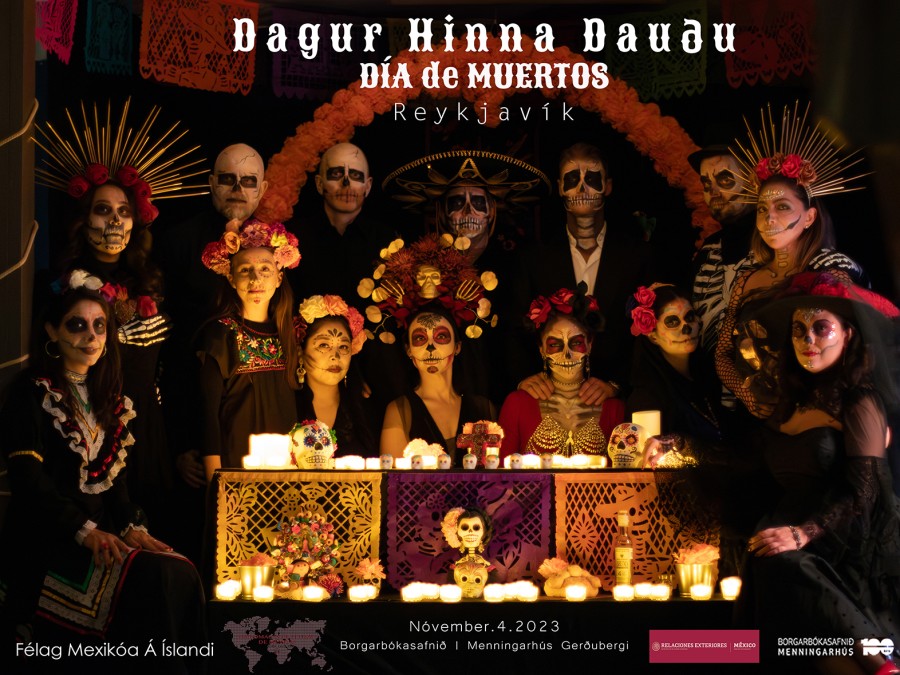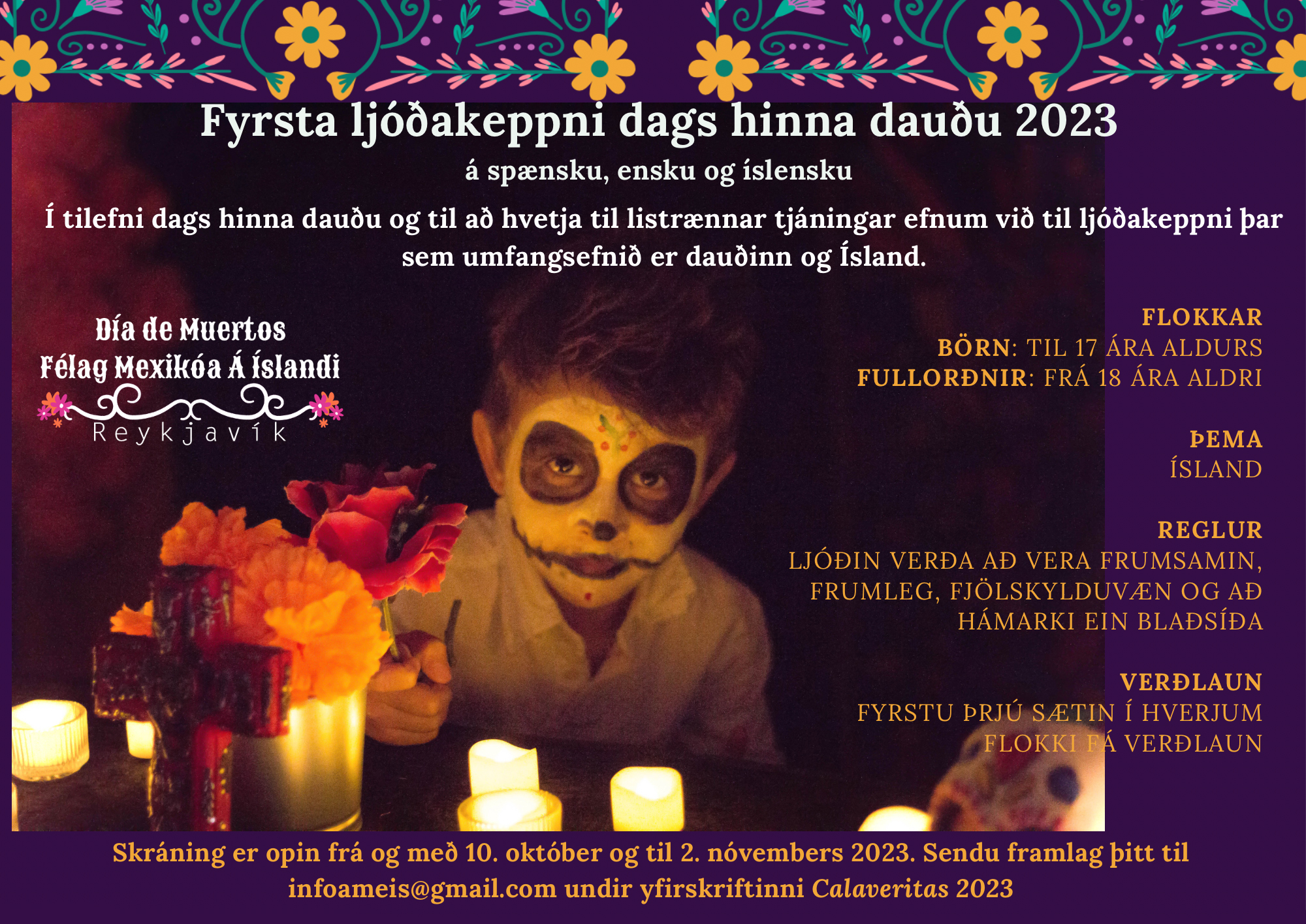
Information about the event
Cosy family time at the Day of the dead
Welcome to Gerðuberg, where the Day of the Dead will be celebrated!
The association of Mexicans in Iceland invites all to a cosy family time at the Reykjavík City Library Gerðuberg (Breiðholt neighbourhood) all families to a Face painting, music, cookie decorating, and an altar!
WHAT IS DAY OF THE DEAD?
Day of the Dead is celebrated across Mexico. The theme is death, but the point is to demonstrate love and respect for deceased family members.
In 2008, UNESCO added the holiday to its list of Intangible Cultural Heritage of Humanity. Today Mexicans from all religious and ethnic backgrounds celebrate Day of the Dead, but at its core, the holiday is a reaffirmation of Indigenous life.
The centerpiece of the celebration is an altar, built in private homes and at cemeteries. These are altars to welcome spirits back to the realm of the living. As such, they’re loaded with offerings—water, food, family photos, and candles. If one of the spirits happens to be a child, you might find small toys on the altar. Papel Picado is draped around altars and in the streets. The art represents the wind and the fragility of life.
In the early 20th century, Mexican political cartoonist José Guadalupe Posada created a personification of death in fancy French garb, intending it as social commentary on Mexican society’s emulation of European sophistication. “We are all skeletons” a quote commonly attributed to Posada. Underneath all our manmade trappings, we are all the same.
In 1947 artist Diego Rivera featured Posada’s stylized skeleton in his masterpiece mural “Dream of a Sunday Afternoon in Alameda Park” and named her Catrina, slang for “the rich.” Today, the calavera Catrina, or elegant skull, is the Day of the Dead’s most ubiquitous symbol.
All welcome - the event is free of charge.
